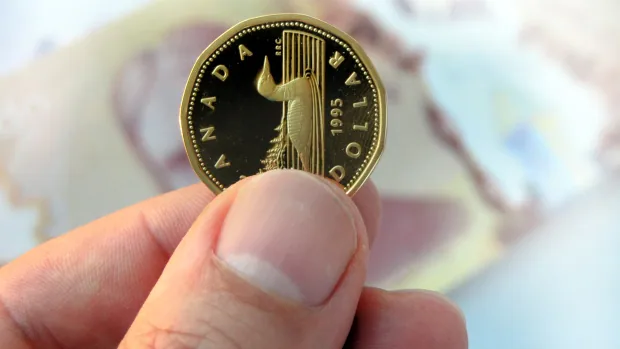The Canadian dollar fell to its lowest level in almost two years on Friday, as investors around the world surveyed the worsening outlook for the econo
The Canadian dollar fell to its lowest level in almost two years on Friday, as investors around the world surveyed the worsening outlook for the economy and ran toward the safety of the U.S. dollar.
The Canadian dollar was changing hands for as little as 75.15 cents US at one point on Friday morning. That’s the lowest level for the currency since October 2020.
The loonie was off by about half a cent from Thursday’s close, just the latest down day in a stretch of them for Canada’s currency. The loonie fell by more than a cent on Tuesday when data out of the U.S. showed the country’s core inflation rate is still going in the wrong direction: up.
One country’s currency doesn’t often plunge because of economic data coming out of another, but that’s not the case right now because of how big a problem inflation is.
Stubbornly high inflation in the U.S. increases the odds that the country’s central bank will have to raise its interest rate even more aggressively than it has been. The U.S. Federal Reserve is slated to do just that next week, raising its benchmark rate by at least 75 basis points to 3.25 per cent, if not more.
Pricing in investments pegged to the Fed rate suggest investors think the U.S. bank rate will ultimately go as high as four or even five per cent.
“Rates will peak higher than assumed a few months ago, and stay there longer than initially expected,” said Audrey Childe-Freeman, a foreign exchange strategist with Bloomberg Intelligence. “At some point the market will focus on the Fed’s next cycle [of rate cuts] but this is far off.”
If the Fed rate goes to 4.5 next year, as investors expect it will, that’s far higher than the Bank of Canada is likely to be able to go, which is why the gap in the two countries’ currencies is widening.
How rate hikes impact a currency
All things being equal, rate hikes increase the value of a country’s currency because it makes it more worthwhile for foreign investors to park their money there: they’ll get a higher return for doing so. That rule of thumb is even more applicable than usual right now, because the U.S. dollar is seen as the safest place to keep your money during times of uncertainty.
“There’s been an absolute flood of money into the U.S. dollar because it is the pre-eminent safe haven and because the U.S. economy is much stronger than everywhere else,” says Adam Button, chief currency analyst with foreign exchange firm ForexLive.
The loonie looks like it’s taking a swan dive because just about everything that isn’t a U.S. dollar is getting walloped right now, he says. Compared to other currencies like the euro, the British pound and the Japanese yen, the Canadian dollar has actually gained ground this year. But it’s falling by the yardstick that most Canadians measure it against: the U.S. dollar.
Another reason for the loonie’s relative weakness is softness in commodity prices like oil and gold, because outlooks for the global economy are getting worse.
“Commodities are weak, largely because the market is (finally) coming around to the fact that the prospects for global demand look bleak,” says Bipan Rai, a foreign exchange analyst with CIBC. “That matters for a key proxy like the Canadian dollar.”
The price of a barrel of oil has lost about $30 since June, which under normal circumstances would be more than enough by itself to drag the loonie down.
But that selling pressure is being made worse by what investors think central banks are going to do. While Canada’s central bank is also hiking rates aggressively, the pain to the country’s housing market and consumer spending will likely compel the central bank to stop hiking soon.
“Up until the last week, the market was saying both will stop at around four per cent,” Button said. “Now the market is saying the Fed can go higher, but the Bank of Canada might not be able to.”
If that happens, that’s a recipe for even more money to pour into the U.S. dollar, which is why Button wouldn’t be surprised to see the loonie dip below 73 cents by the end of the year.
“Canadians might not fully appreciate just how bad things are,” he said.
www.cbc.ca
